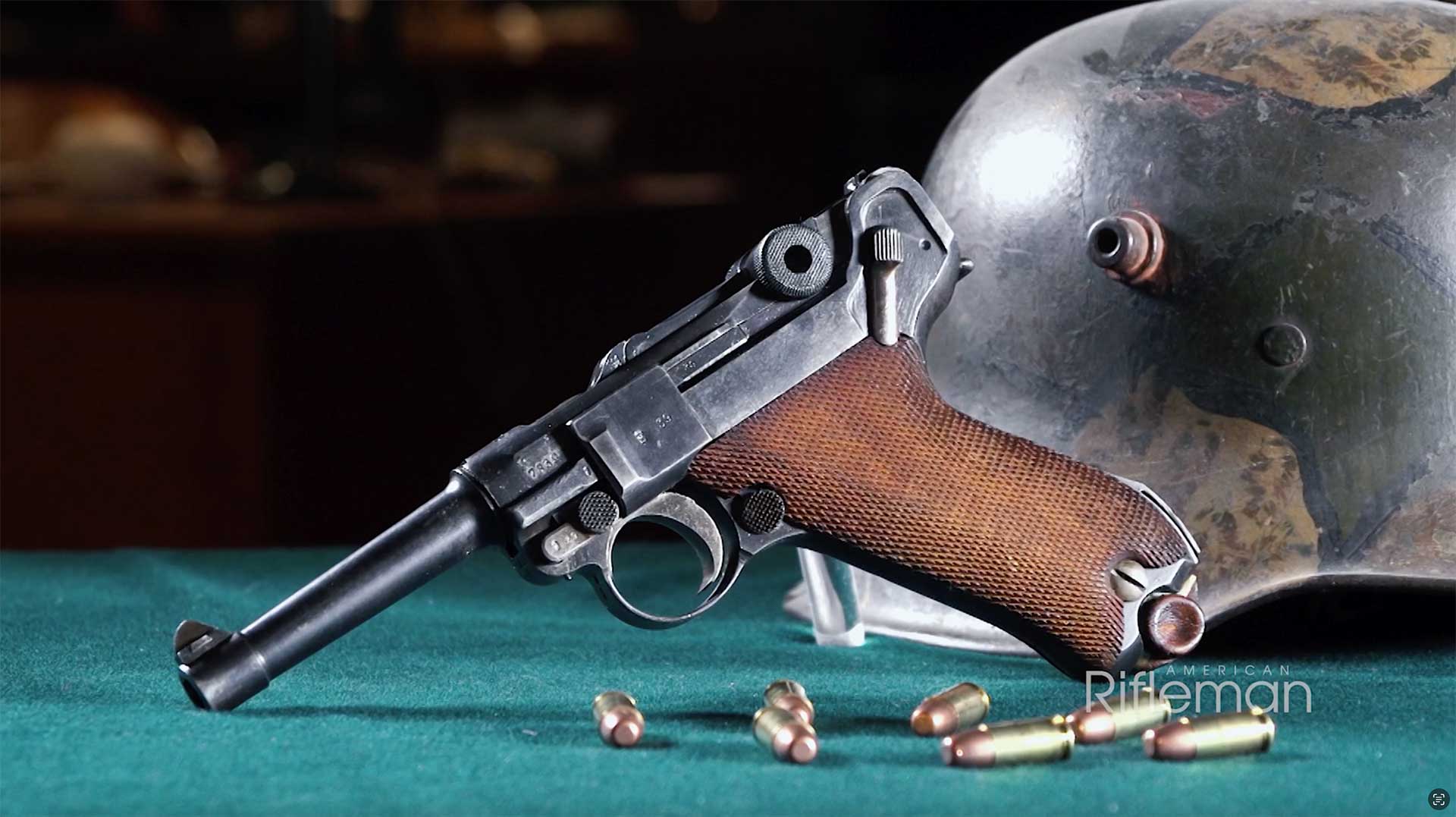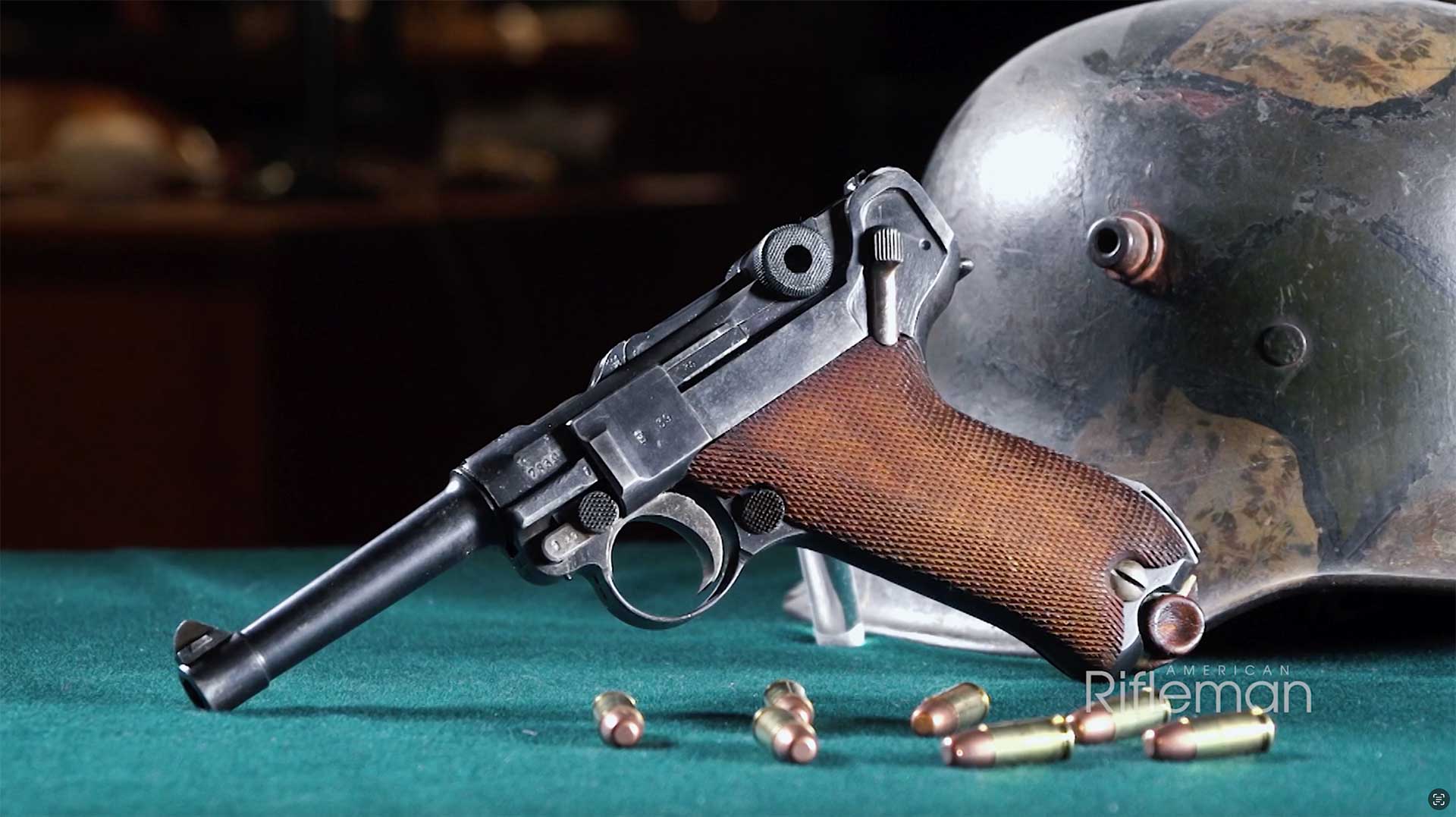
NRA Museums image
It seems to be the nature of modern human culture to react to a threat—like war—with great alacrity and energy and then try and find a vent for that huge volume of energy once hostilities come to an end. Equally apparent is the penchant militaries have for fighting the previous war after it has ceased—to wit: the design and production of most “state of the art” weapons. Like the U.S., the post-World War II Soviet Union spent a great deal of its assets—both real and imagined—on producing a new and modern rifle for its troops based upon the demands of World War II.
The concept of a full-size battle rifle chambered for a powerful cartridge that could incapacitate an enemy soldier out to 2,000 yards was rapidly being replaced by the creation of a selective-fire carbine chambered for a medium-capacity cartridge that could reliably take out an enemy soldier out to about 400 to 500 yards. Such a rifle would be lighter, thus allowing a soldier to carry more ammunition and have a detachable box magazine that would increase the firepower of an individual soldier and make him and the entire combat force more efficient.
Germany was one of the first to pursue this logic during World War II with its StG 44 rifle. Thankfully, Adolph Hitler was a bit hesitant to fully implement the StG 44 en masse, otherwise the war would have almost assuredly lasted longer.
The Soviets began exploring the concept of this new sort of rifle as early as 1943, developing a new intermediate-capacity cartridge, as well as a semi-automatic rifle. Named the Samozaryadny Karabin sistemy Simonova, 1945—literally Self-loading Carbine of (the) Simonov system, 1945, now abbreviated to SKS-45—was designed by Sergei Gavrilovich Simonov, a Russian arms designer. Simonov had designed an earlier AVS-36 that was a selective-fire rifle chambered in the full-size 7.62×54R cartridge that was in production from 1936 through 1945. The AVS-36 was a reliable and reasonably accurate rifle, but its lack of controllability in full-auto contributed greatly to its relatively short life.
Simonov had developed a tilting-bolt lockup operated by a short-stroke gas piston and mounted it in a spring-loaded bolt carrier group. The bolt has a lug at its rear that mates with a corresponding recess in the bottom of the receiver. When the bolt is in battery, the rear is held down so that the lug is in its recess. Upon firing, the gas piston is actuated by cartridge combustion gases tapped from a port approximately 7" from the muzzle which transfers that energy to a piston extension that impacts the face of the bolt. Once the pressure decays enough to be safe, the impact of the piston bar moves the bolt enough to allow it to tilt upward, thus freeing the bolt to continue its rearward travel. A spring-loaded extractor mounted on the bolt engages a rim on the cartridge case and holds it in place as the bolt moves rearward. Another lug machined into the left side of the receiver serves as an ejector. Once the bolt moves forward, it strips a fresh round from a 10-round internal box magazine. When the last round from the magazine is fired, a catch on the follower holds the bolt open. The receiver is slotted for stripper clip use, although the magazine may be loaded with single rounds from the top of the receiver. A latch located just in front of the trigger guard frees the magazine at the rear allowing it to pivot on a forward-mounted hinge to quickly empty the magazine.
Image courtesy of NRA Museums
The barreled action and fire-control group are mounted in a more-or-less conventional hardwood stock. A bayonet that swivels 180 degrees is mounted under the barrel. For cleaning, a rod is nestled in the fore-end of the stock.
Wikipedia image
Sights consist of a hooded-post front, along with a tangent notch rear sight graduated from 100 to 1,000 meters. With its 20" barrel, the SKS-45 is 40" long and tips the scales at 8.5 lbs. unloaded.
The SKS-45 is a homely, though robust, rifle. Its metalwork and stock may be crude, but it has proven to be a remarkably reliable rifle, as are most Soviet-made guns. I have shot a couple examples and found them to be surprisingly accurate—very close to 1" at 100 yards, though this was a couple of decades ago when my eyes were more suited for iron sights.
Early examples of the rifle from the Soviet Tula Arsenal had spring loaded firing pins that kept the firing pin from being exposed to the bolt face. Somewhere around 1950 this was changed, and subsequent rifles were equipped with floating firing pins. Users of later versions must take especially good care to keep the firing pin and its recess clean, lest the pin be held forward of the bolt face and cause an uncontrollable slam fire before complete bolt lockup. Another way to cause the rifle to slam fire is to assemble the firing pin without the notches in it pointed up. Its cross section is triangular, and an unobservant user can miss-assemble it.
The SKS rifle was produced at the Tula Arsenal from 1945 until 1958, when it was superseded by the AK-47. As with its successor, the Soviets readily made and/or licensed the manufacture of the SKS to nearly anyone who wanted it. This was in no small part the way they financed their arms race with the West. Consequently, some 15 million SKS rifles have been made by countries as different as China to Yugoslavia; Romania to North Korea. It has been used in no less than 97 countries around the world as a military arm.
Variations on the basic design abound. Soviet-produced SKS rifles contain a spring-loaded firing pin (1949-1951) and free-floated firing pin (post 1951), though collectors note some minor gas block modifications throughout its manufacture. An OP-SKS was produced into the 2000s as a hunting rifle variant, too. Chinese SKS rifles Type 56 (for 1956) had a variety of small changes from the original design. Other Chinese rifles featured rotary bolts, a la AK-47, stamped sheet steel receivers, folding stocks and a Type 84 Paratrooper model with a 16" barrel. Some of these were modified to use 30-round AK detachable magazines. Polish SKS rifles are refurbished Soviet rifles. Yugoslavian rifles feature a modified gas block so that gasses could be blocked for use a grenade launcher. In this condition the rifle must be manually operated.
With so many different manufacturers, the quality of the end product varies greatly. Most manufacturers lined the barrel with chrome to help check the corrosiveness of surplus, chlorate-primed cartridges and to provide some heat and wear resistance to sustained fire. Yugoslavian (Zastava Arms) SKS rifles are not chrome lined. Romanian-made rifles are considered to be some of the better copies of this rifle, right up with the Soviet-made ones.
A huge number of surplus SKS rifles were dumped into the U.S. market in the 1980s, and before the Clinton “Assault Weapon Ban” of 1994, you could buy a fairly nice SKS for as little as $70. The 1994 law banned import of Chinese-made SKS rifles, forcing an upsurge in prices. Chinese rifles are more crudely made, though they are functional, garnering the moniker of a “poor man’s deer rifle” because the 7.62x39 cartridge is so close ballistically to the American .30-30 Win. Today, prices for SKS rifles start at $350 to $400 and go up based primarily on rarity—and thereby collectivity. A Tula-made SKS in decent shape—it is difficult to find examples in pristine condition—will fetch a C-note either side of a grand.
The SKS-45 rifle will never win any beauty contests, nor will it be the basis for a fine sporting rifle. But it represents a seminal moment in firearms design whereby function leads form. Much like an old brown farm dog, you wouldn’t want to take it to a formal function, but in a clutch it will deliver the goods for its user.





































